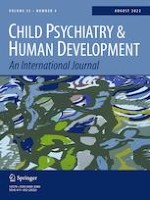18-03-2021 | Original Article
Are Children High on Callous-Unemotional Traits Emotionally Blind? Testing Eye-Gaze Differences
Gepubliceerd in: Child Psychiatry & Human Development | Uitgave 4/2022
Log in om toegang te krijgenAbstract
Callous-unemotional traits have been associated with difficulties in identifying and responding to others’ emotions. To inform this line of research, the current study investigated the eye gaze behavior of children (n = 59; mean-age = 6.35) with varying levels of callous-unemotional (CU) traits with the use of eye-tracker methodology, as well as their ability to accurately identify emotional expressions. Participating children were selected from a large screening sample (N = 1283). Main findings supported a reduced fixation rate to the eye-region and an increased fixation in the mouth area of emotional faces among children high on callous-unemotional traits (HCU), irrespective of emotion expressed (i.e., fear, sad, angry and happy) and age of individuals portrayed in images (adult versus child faces). Further, findings suggested that HCU children were less likely to accurately identify facial emotional expressions, which might be due to the identified attentional neglect to the eye region of emotional faces. Current findings support the importance of early prevention and intervention programs that can enhance the emotional development and social adjustment of HCU children.
